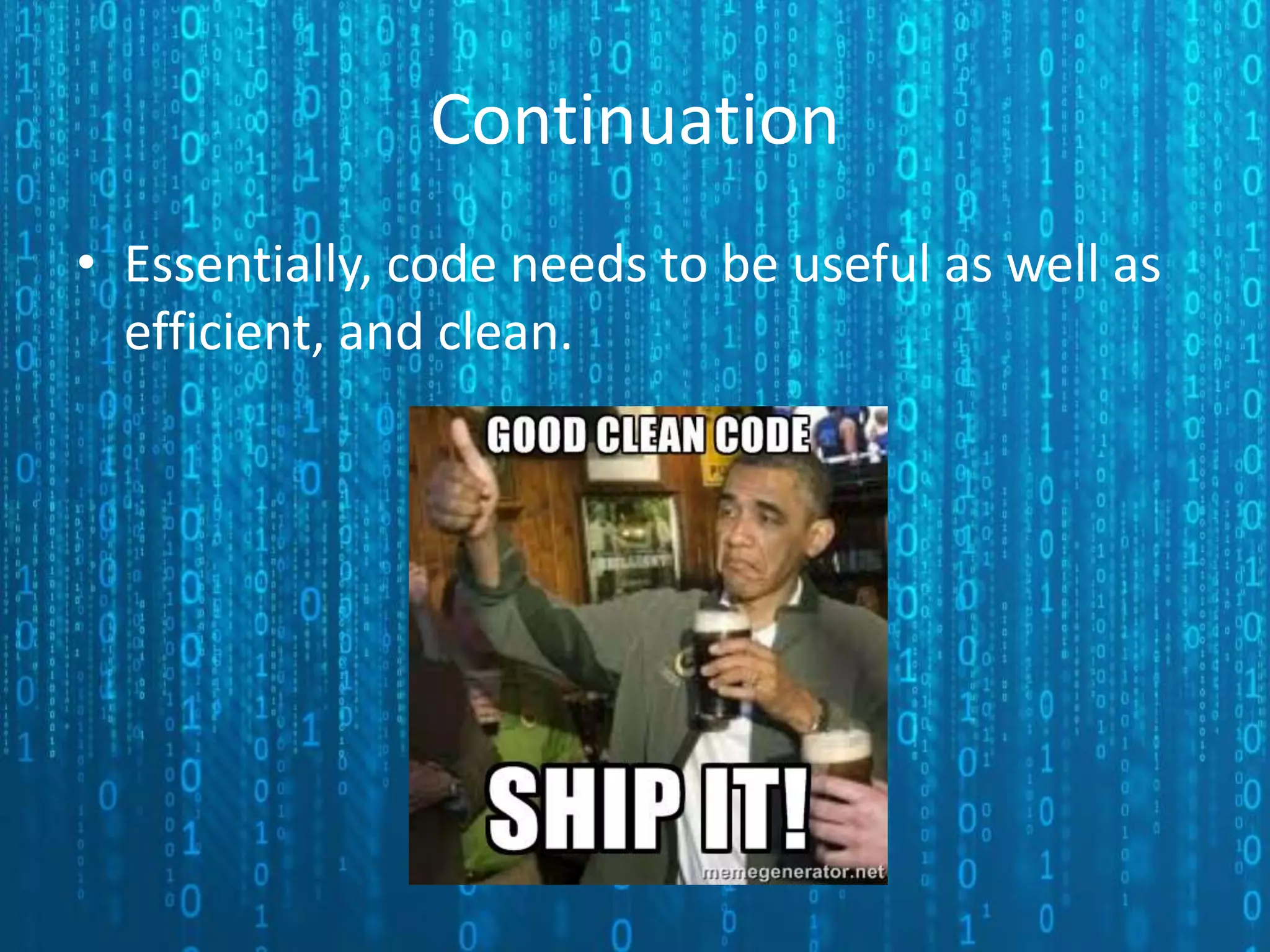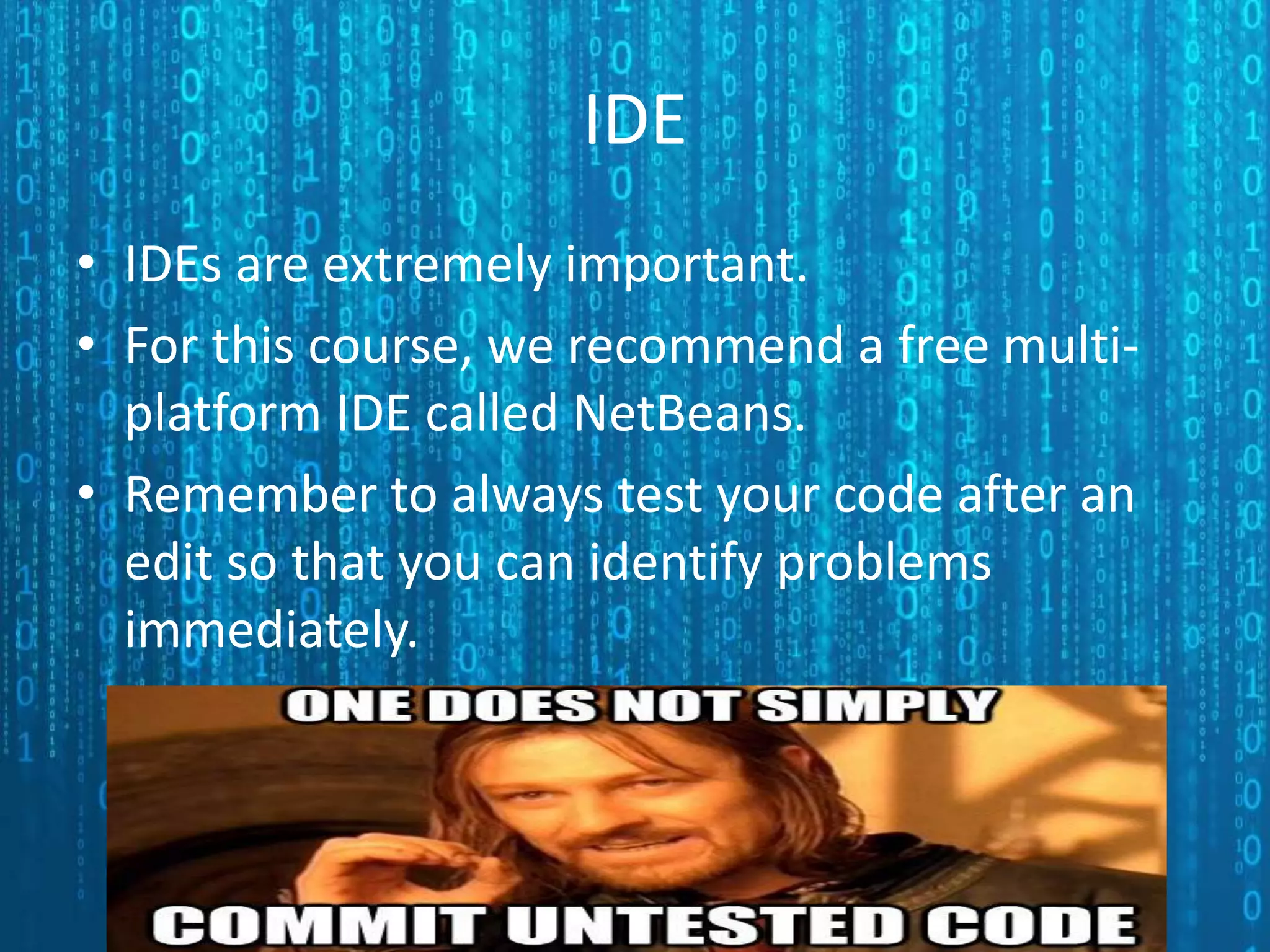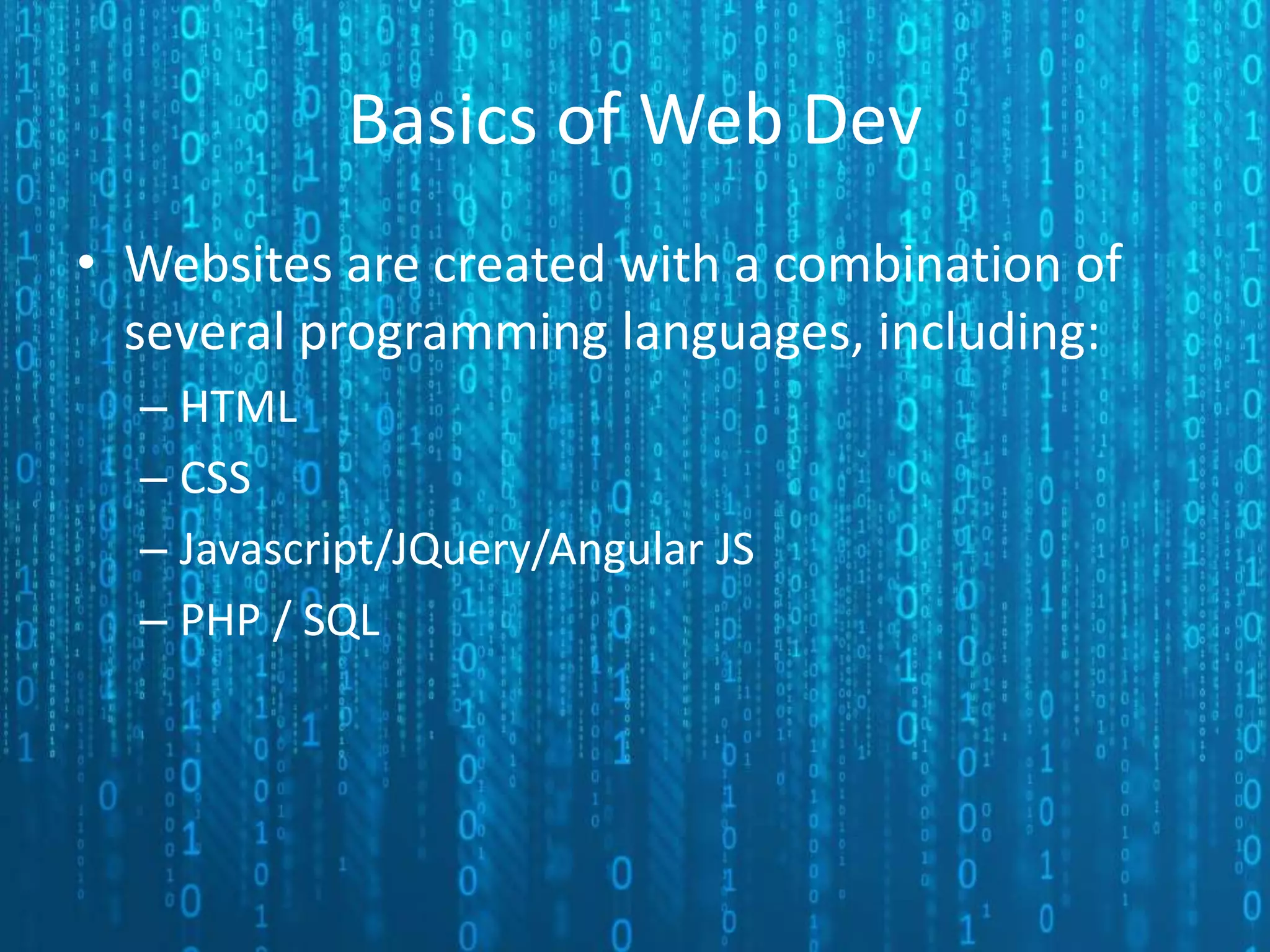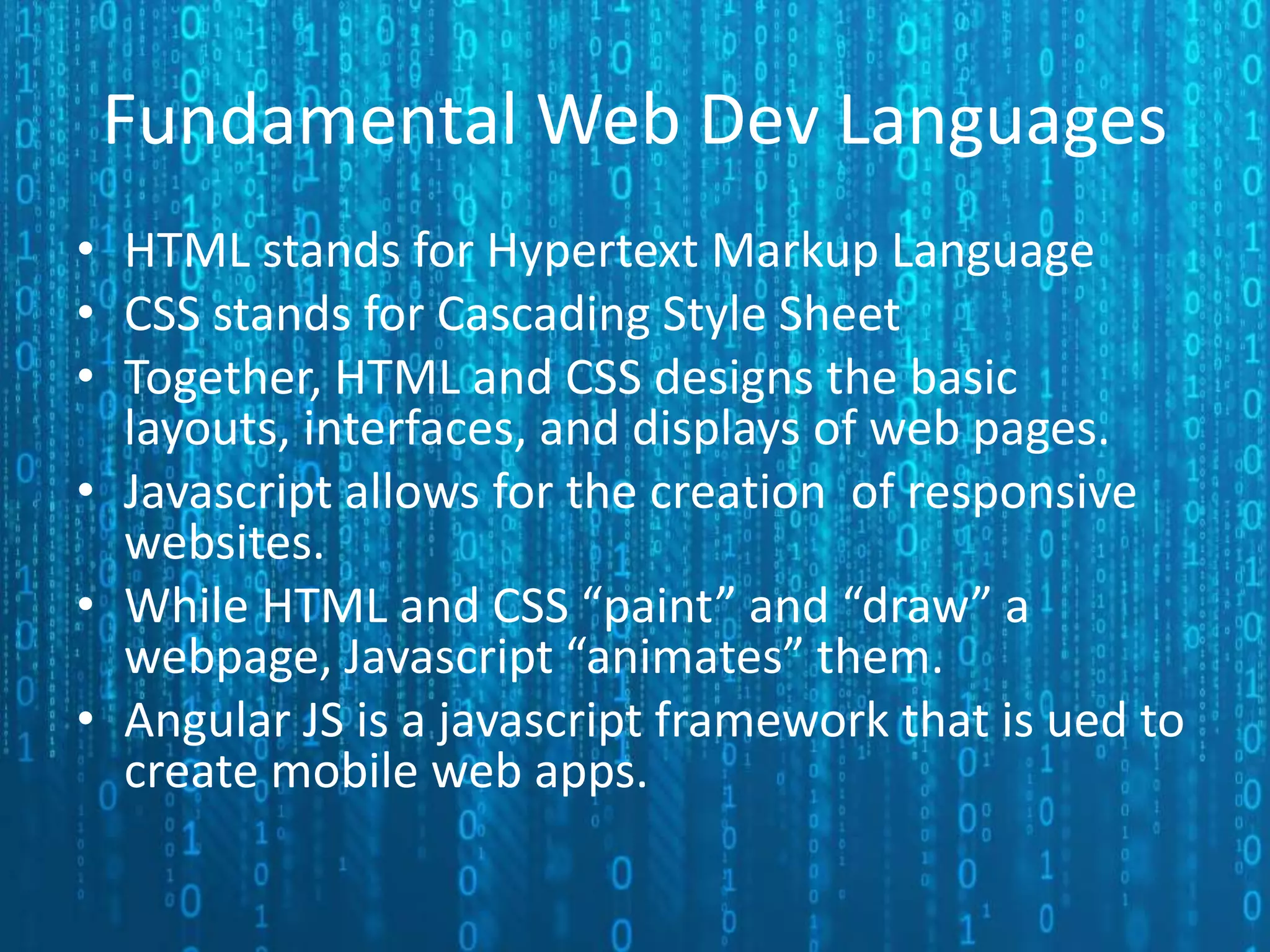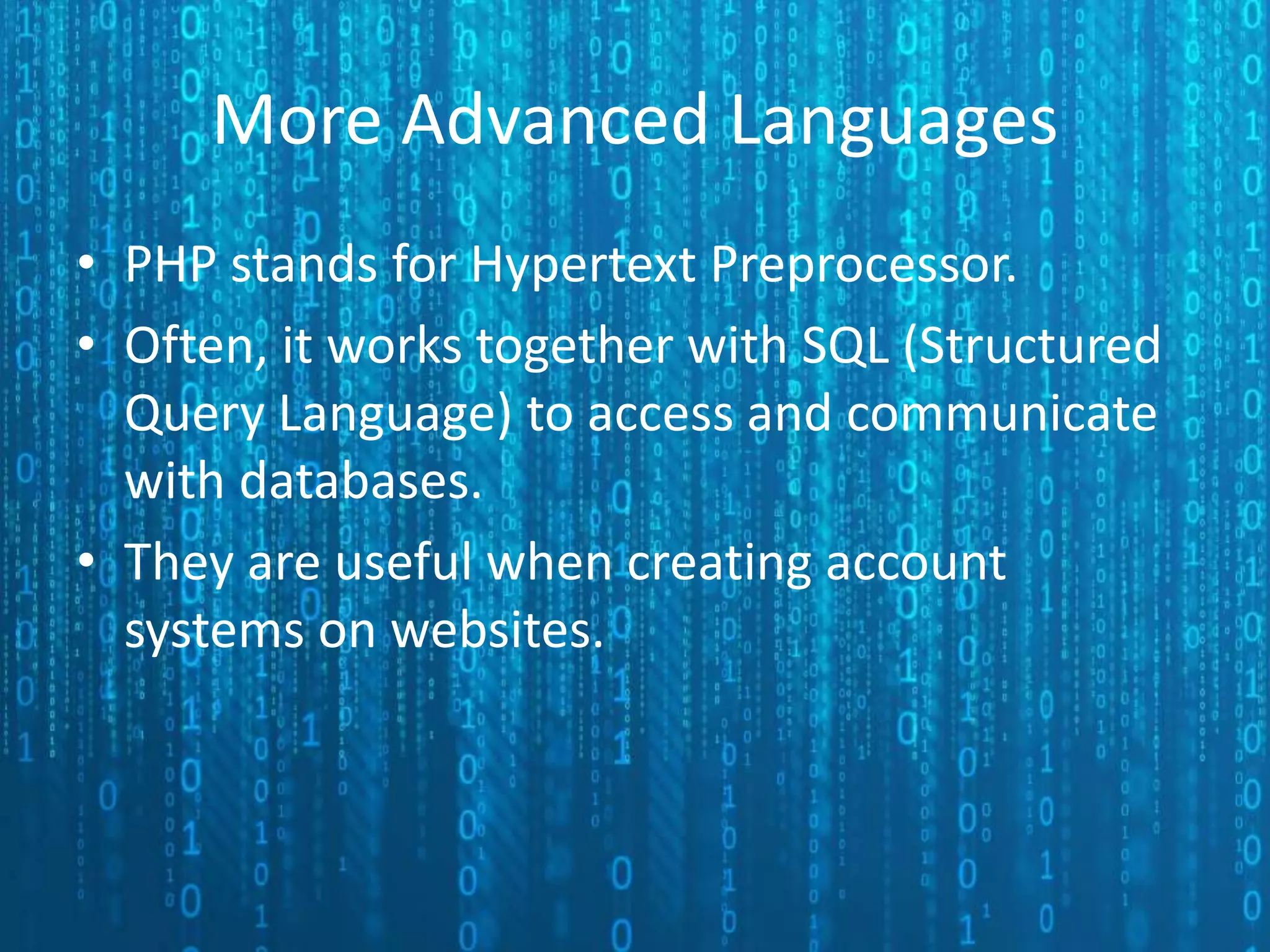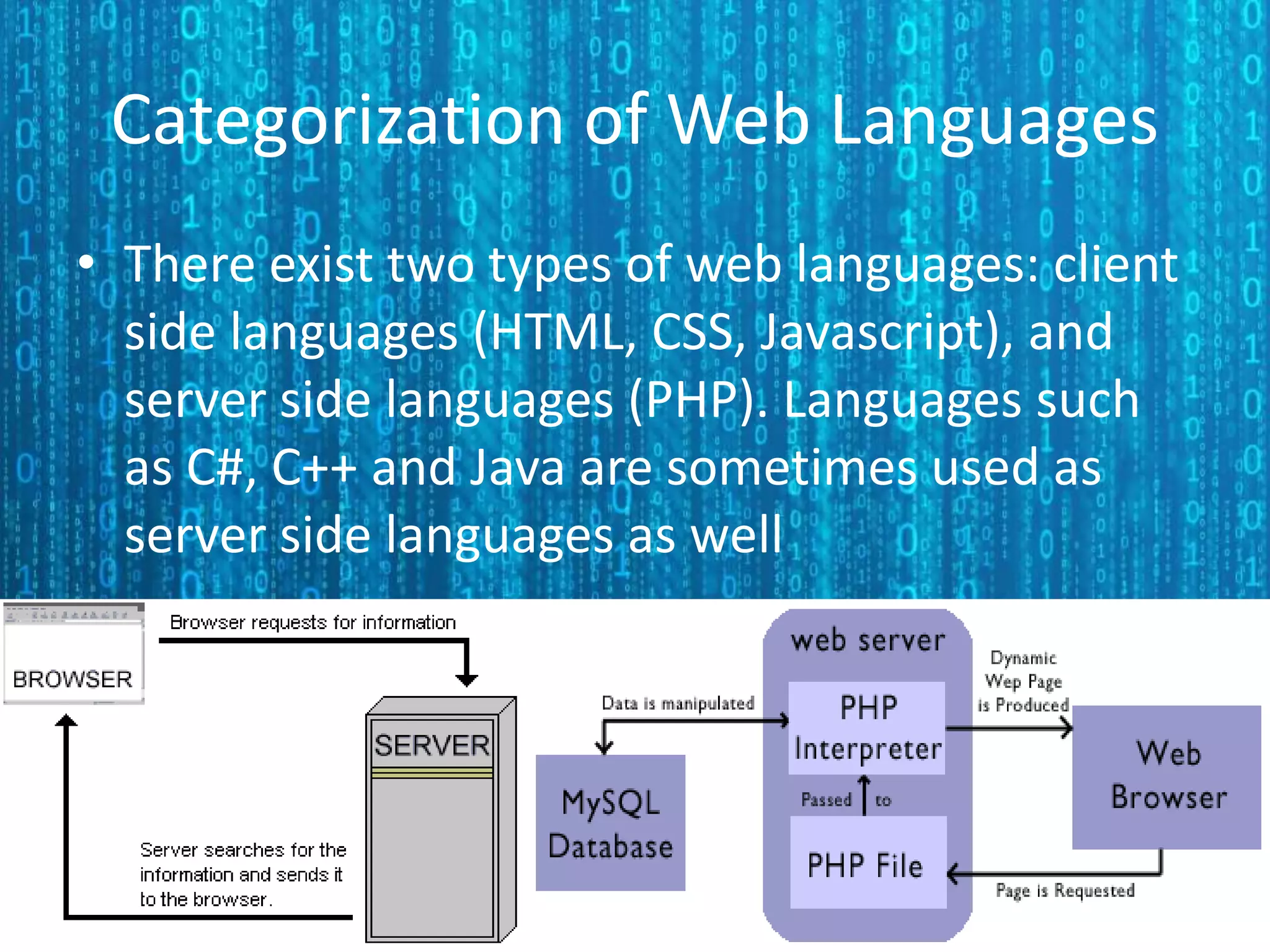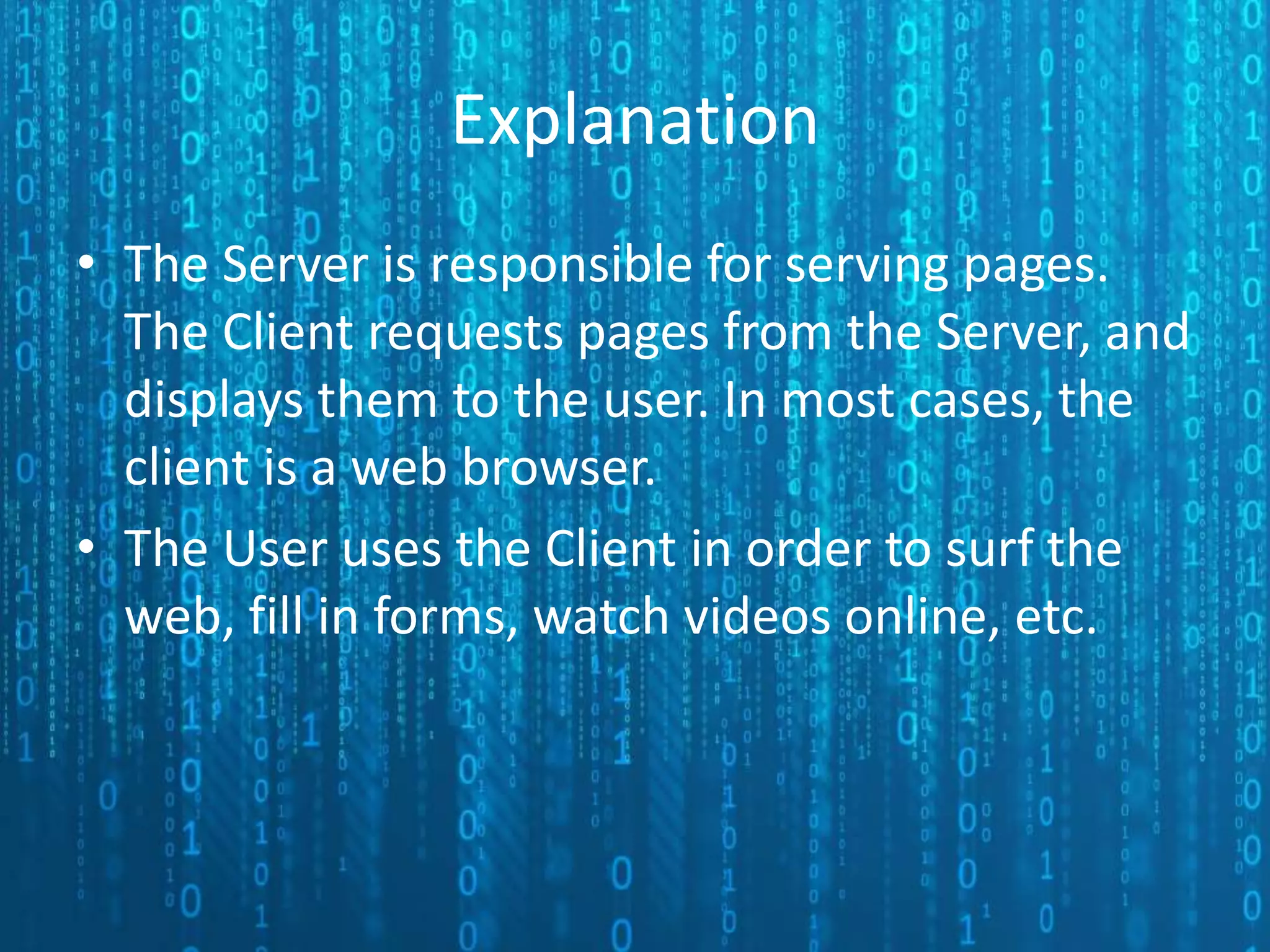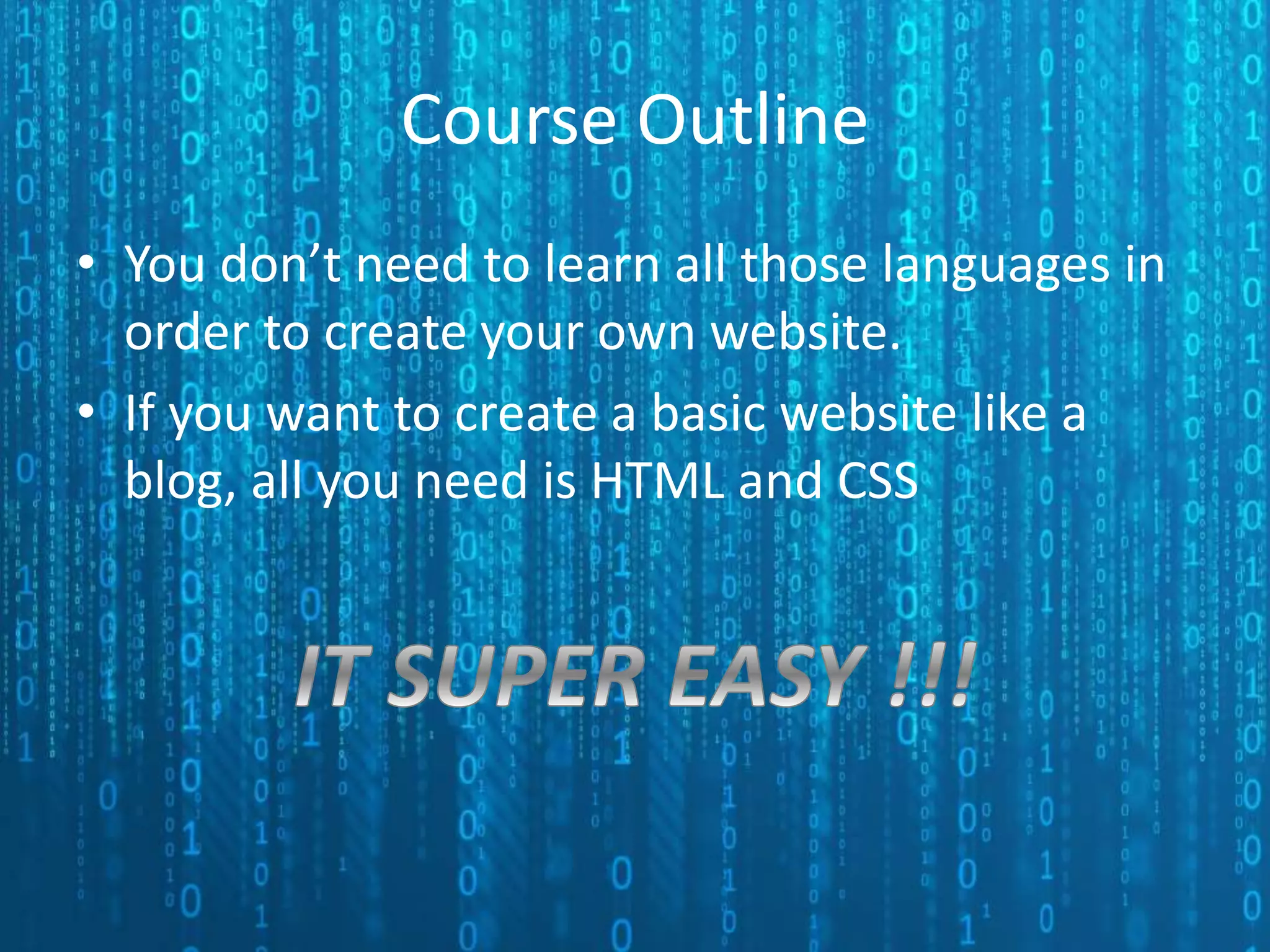Code is a language that allows humans to communicate with computers. There are three goals of coding: functionality, reusability, and good style. Code is written and tested using an Integrated Development Environment (IDE) to identify and fix bugs. Websites are created using a combination of programming languages including HTML, CSS, JavaScript, PHP, and SQL. HTML and CSS define the layout and design of web pages, while JavaScript makes pages interactive.


